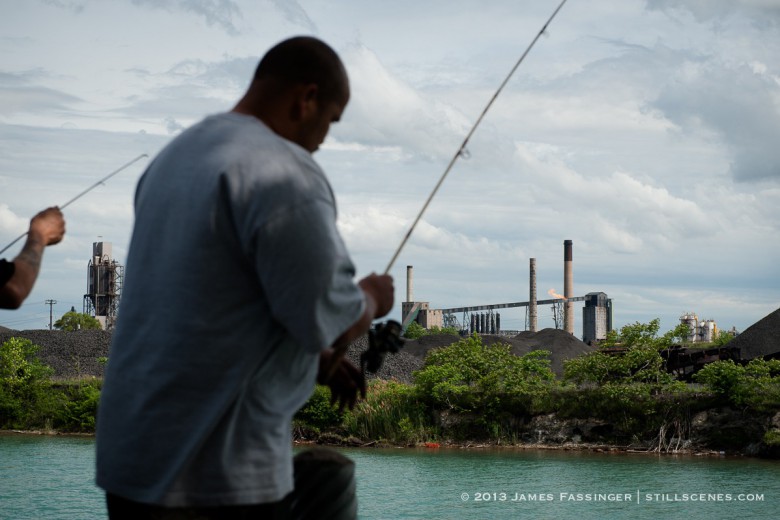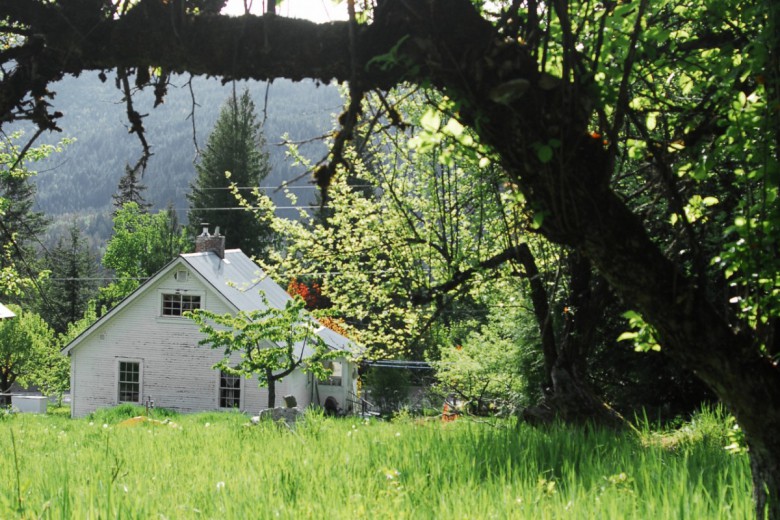
Canada’s energy future is a contentious topic these days. Falling oil prices have spurred fear and uncertainty about a national economy that relies heavily on resource extraction. Pipelines and resource extraction projects are fa-cing increasing resistance from affected communities and the public. Support for renewable energy projects is growing and such ventures are ever more feasible, though financial backing has been slow to catch up.
Meanwhile, momentum for a global energy transition is building. Books like Naomi Klein’s This Changes Everything: Capitalism vs. the Climate have invigorated the debates, and massive public demonstrations and mobilizations have taken place, including the People’s Climate March in September 2014 and the demonstrations at COP21. In Canada, the Leap Manifesto – an initiative penned by dozens of high-profile Canadians that calls for government, industry, unions, and activists to support the transition to a clean-energy economy – sparked a robust debate about what Canada’s energy future will look like.
While the election of the Liberal government last October was broadly seen as a positive development for climate policies, there are few signs of changing priorities amid many signs of building tensions between environmental, labour, and Indigenous liberation objectives. Following the COP21 summit in Paris in December, Canada was widely praised for advocating for the restriction of global warming to 1.5°C, generally accepted to be the point that can avert the worst climate effects. But at that same summit, writes Erica Lee for The Monitor, the Canadian Youth Delegation was told in a meeting with Canada’s Environment Minister, Catherine McKenna, that “the federal government’s responsibility was to welcome Enbridge, Suncor and other mining companies to the table with Canadians and Indigenous people.” What’s more, Prime Minister Justin Trudeau and the first ministers held a meeting this March to plan a national climate strategy, but the discussions yielded no specific targets or actions in the immediate term; the working groups are slated to do further research and report back in October. Underlying these talks is Trudeau’s stated position that pipelines and extractive industries will “fund this transition to a low-carbon economy” – a position that many environmental and Indigenous activists know to be irreconcilable with climate justice and Indigenous sovereignty.
Of course, the government’s high-profile promises, contradictions, and PR tactics cannot overshadow the continual resistance of the many front-line Indigenous communities whose territories are testing grounds for climate policies. In 2013, the Elsipogtog First Nation made national headlines for resisting fracking development on their lands. In March 2016, the Supreme Court of Canada allowed the Chippewas of the Thames First Nation in Ontario to appeal Enbridge’s Line 9 pipeline. On the West Coast, the Unist’ot’en continue to defend their land against pipeline development, while the Gitwilgyoots tribe of Lax Kw’alaams on Lelu Island are resisting the construction of a liquefied natural gas (LNG) terminal. This resistance raises the crucial question of who has the authority over the land where extractive projects are based.
In the midst of these tensions, the urgency of responding to climate change is often tamped down by a dangerous binary framing of the issue: jobs versus the environment. This false dichotomy constructs a zero-sum game in which the rejection of resource extraction projects for the sake of the environment means forgoing stable, well-paying jobs. This dichotomy ignores what many have been saying: investing in clean energy can ensure that unionized, stable employment is protected. Research shows that for every two jobs created in oil and gas in Canada, 15 jobs could be created in clean energy.
Often caught in the middle of this debate, energy workers are having their own conversations about what Canada’s energy transition should look like in practice. How do the workers feel about renewable energy, about our economy, about capitalism itself? How do they reconcile their nine-to-fives with the certainty of climate crisis?
Lliam Hildebrand is a boilermaker grappling with this binary. Hildebrand has been working in the tarsands for the past six years, and in 2015 he founded a membership-based organization called Iron & Earth to advocate for a shift to renewable energy. I spoke with Hildebrand about organized labour, capitalism, and how his co-workers are approaching the coming energy transition.
What is Iron & Earth? What are you hoping to achieve with this organization?
LLIAM: We are a group of oilsands workers who realized there’s an incredible opportunity for us to transition into renewable energy projects with many of the same skills that we have today. And when we’re looking around Canada, it’s pretty obvious that there’s a lot of opportunity for growth in the renewable energy industry, and it doesn’t seem to be happening. Meanwhile, our work with the oil and gas sector is declining…. We have to come together to help catalyze the renewable energy industry in Canada. We’re also building a membership of workers who are interested in incorporating renewable energy projects into their work scope.
Why do you think the message and particular focus you’re taking at Iron & Earth is important in the climate movement more generally right now?
LLIAM: [In] all the conversations around the oil and gas industry, the worker’s voice isn’t being accurately represented. I’ve been working up in the oilsands for the last five years and every time I go up there, the vast majority of my co-workers are really excited to talk about renewables and creating a better planet. They’re proud of their trade, they’re proud of their skills, but they’re [feeling] guilty about what their day-to-day activities are doing to the planet. And they would rather create infrastructure that’s going to save the world, not continue negatively impacting it.
How do your fellow workers in the oil and gas sector, specifically in the oilsands, view Iron & Earth? How do they view themselves in relation to the climate movement?
LLIAM: This organization was completely shaped by my conversations with my co-workers. They really emphasized to me that they did not want to create a movement. What they wanted to create was a program, or some kind of service, and not just ask for change but actually physically create the change themselves. So where I think we fit in to the movement that way is that we can create change as workers; we can do the research, we can do the training, we can build the infrastructure required, and where we need the environmental movement to support us is by building that public support and helping leverage that voice.
Some folks who see the environment as the ultimate priority might conclude that oil and gas workers don’t care about the environment. Do you think Iron & Earth is helping to break down stereotypes around oil and gas workers?
LLIAM: I think a lot of people naturally assume that oilsands workers will defend the oilsands at all costs because that’s where their livelihoods are. That’s not the case. We are incredibly grateful for the work that we have had in the oilsands, and that’s going to be a big part of our message because we are trying to build bridges. We’re not going to be a confrontational organization at all costs. We want to be promoting solutions and what we see in terms of opportunities that will benefit all stakeholders. People might assume that oilsands workers wouldn’t support renewables, but I don’t think the general population of Canada realizes how transferable a lot of our skills are. We can build anything. And renewable energy is large-scale infrastructure; we can build that, and we would rather build that than some more carbon-based infrastructure.
Where do your co-workers source their information about renewable energy? Are they most interested in renewable energy news in terms of changes that will affect their own jobs, or are there other aspects of the shift to renewables that they are interested in?
LLIAM: A lot of these guys [sic] read the news, and it’s a pretty mainstream story these days that renewable energy is being deployed widely across the world. They all read these sources for really different reasons, though, I think. Some because they are concerned about their jobs, as they don’t yet recognize the opportunity that exists in renewable energy sources. Others are really interested in technology in general. And others do see this energy infrastructure as something that our tradesmen [sic] can build, and these are the conversations that have really inspired the formation of this organization.
You’ve mentioned that your co-workers are excited to talk about renewable energy. Is this positivity among the workers a relatively new thing? Or has the conversation been happening without us knowing?
LLIAM: I started going to the oilsands about six years ago and I [have been] having these conversations with workers since then, but our conversations have evolved alongside the evolution of the renewable energy industry – which, right now, is absolutely exploding [and] growing at an exponential rate. And in the last five years particularly, we’ve seen a lot of renewable energy technologies become price-competitive with a lot more carbon-based sources of energy, and the conversations that we have with workers reflect those changes because we’re actively keeping our thumb on the pulse. And so we are largely pretty aware of the fact that renewables are exploding, and it leaves us wondering why no one’s taking action in Canada to help create that infrastructure here.
There has long been a tension between organized labour and the environment. Some people would argue these are well-paying jobs that we need to protect, while others say we need to prioritize the environment at all costs. How do you view the intersections between organized labour and the environment? Where do you see Iron & Earth being part of that relationship moving forward?
LLIAM: We’re very positive that we’re going to be able to build positive working relationships with the various unions. So much of the workforce in the oilsands and carbon-based sectors [is] union labour, and so it’s of utmost importance to ensure that we build positive relationships with these union members and empower them to start incorporating renewable energy projects into their work scope. And that’s how we are positioning our message … it’s not about shutting down the oilsands, it’s not about shutting down the oil and gas sector, because we need oil and of course we’re going to continue using that for quite some time. But a transition is inevitable, and will take place in the near future.
How do you position Iron & Earth in relation to the debate about whether capitalism – a system based on growth for growth’s sake – can be truly green? Does Iron & Earth take a position on what the economic system should look like?
LLIAM: Many of my co-workers are amazed at how Norway has managed their oil and gas resources. The heritage fund they have built up is phenomenal, and the social distribution of that wealth has greatly benefited their society. This is a popular discussion topic on the job site, and there is a lot of support for ensuring more of the revenues from Canada’s oilsands development [goes] toward similar funds. Norway is now using this wealth to transition into a renewable energy economy.
[One of t]he stated core values of Iron & Earth is that energy development needs to prioritize the health and equity of workers, families, communities, the environment, and the economy. Norway is an example of a country which has managed to use both social democracy and capitalism to largely live up to the values that Iron & Earth shares, especially in their recent pursuits in renewable energy development. So I think capitalism isn’t the problem necessarily, but how some people and companies have used it is not in alignment with the values of our organization.
What has been the public response so far to Iron & Earth?
LLIAM: We’ve had a very positive response and I think a lot of Canadians are wondering what the workers are saying about these issues. It’s traditionally the voice that the union would be expressing, but our unions haven’t been taking a stance on these issues so we’re figuring out how to do that ourselves, and we’re really excited to share this message with more Canadians.
Some responses have been edited for length and clarity. The author wishes to thank Dr. Emily Eaton for feedback on these interview questions.






